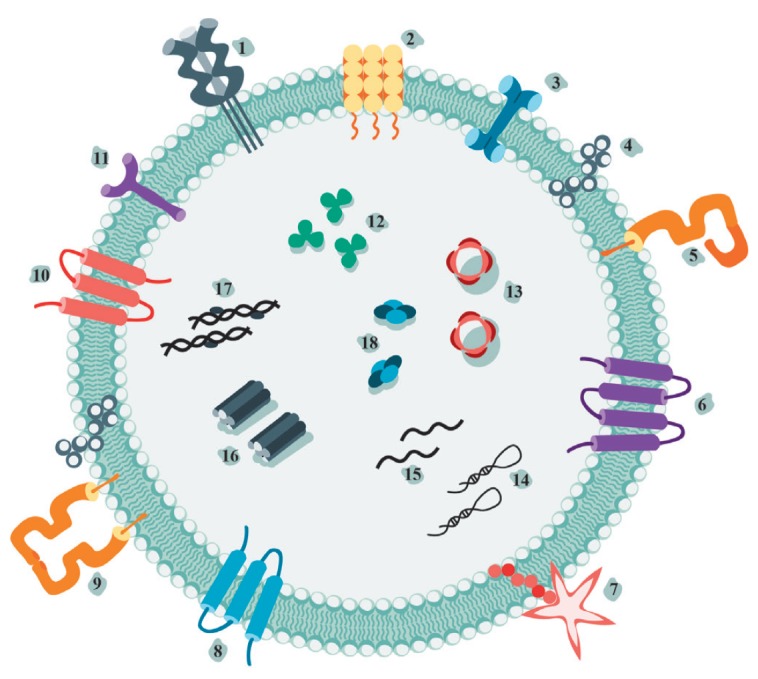Fig. 1.

Schematic representation of a typical vesicle with the most common components. Adhesion molecules (integrins (11), tetraspanins (6, 7, 8, 10)); signal transduction molecules (syntetins, annexin V(3)); major histocompatibility complex molecules (MHC class II (5) and MHC class I (9)); cytoskeletal proteins (actin, myosin (16)); heat shock proteins (12); lipids (ceramide (4)); proteins responsible for vesicle biogenesis (13); and proteins of metabolism (GAPDH(18)). 1 – FasL; 2 – ICAM-1; 3 – annexin V; 4 – ceramide; 5 – MHC I class; 6 – tetraspanin CD81; 7 – CD80; 8 – tetraspanin CD9; 9 – MHC class II; 10 – tetraspanin CD63; 11 – integrin; 12 – heat shock proteins; 13 – AUX/Alix; 14 – microRNA; 15 – mRNA; 16 – actin, myosin; 17 – DNA with histones; 18 – GAPDH (glyceraldehyde-3-phosphate dehydrogenase)
